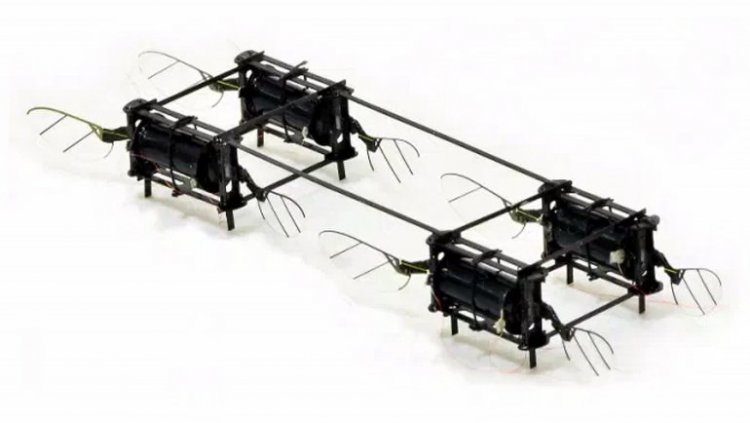Tiny Beetle-like Drones Are Close to Reality
Insect-like drones are one step closer to reality. Researchers at Harvard, MIT and the City University of Hong Kong have developed tiny insect-like drones that not only maneuver in extremely tight spaces, but are also shockproof.

Insect-like drones are one step closer to reality. Researchers at Harvard, MIT and the City University of Hong Kong have developed tiny insect-like drones that not only maneuver in extremely tight spaces, but are also shockproof. The device start switch is designed as a small switch that makes the drone flap its wings.
Drone manufacturers who wanted to develop such a small device used a piezoelectric ceramic-based actuator instead of the conventional motors we know. These new drones are powered by a soft actuator made of rubber cylinders coated with carbon nanotubes. When voltage is applied to these nanotubes, they squeeze and loosen the rubber to flap the drone's wings about 500 times per second.
As you can imagine, this method is quite effective. Being "in the centimeter scale" of drones allows them to pass through small spaces, perform hard maneuvers (including somersaults) and survive some collisions unscathed. They weigh as much as a wasp.
Therefore, there are limitations in many areas of use. These tiny drones are still running on their power sources, and there are so many AI tasks you can put into such a small robot. They are far from practical use for now.
If scientists can fix these problems, these drones could have significant impacts on our lives. MIT Assistant Professor Kevin Yufeng Chen envisions the future use of tiny bee-like drones that assist in machine maintenance and even artificially pollinate plants. These tiny devices could be a revolution for drones and reach environments where conventional drones can't.
Aircraft engine manufacturer Rolls-Royce has begun testing a maintenance environment in which it will use small drones to inspect key parts inside the engines and detect microcracks in fan blades. If a positive result is obtained, instead of disassembling and installing the engine using more human power, these small drones will provide maintenance without disassembling the engines, and the engines will be disassembled only when necessary. In this way, it is foreseen that the company will save money.